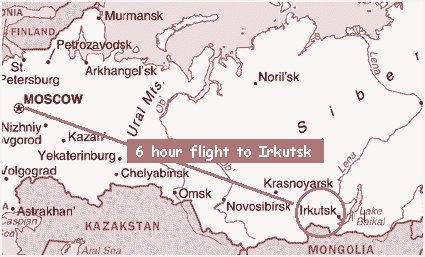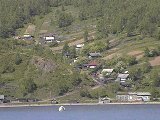| Irkutsk, Siberia - Russia |
| Irkutsk, Siberia: |  |
|
Irkutsk is located in the center of Eastern Siberia.  It rests on the banks of the Angara river and is noted for its beautiful Lake Baikal, which is the deepest lake in the world as well as a natural resource for the area. It rests on the banks of the Angara river and is noted for its beautiful Lake Baikal, which is the deepest lake in the world as well as a natural resource for the area.
Irkutsk has preserved many of its unique Siberian houses and buildings, with intricate artistic
We are delighted to share some of the tidbits of the history of Irkutsk. We want our children to understand where they came from and appreciate the beauty of God's creation in their native land, as well as its history, culture and people. Please read on for more fascinating history of this region. A Little Siberian History: In 17th century Russia, rivers served as one of the main means of facilitating communication, trade, commerce and travel. This was especially true of uncharted territories in Siberia. Roads did not yet exist to connect the Far East with other major Russian cities such as St. Petersburg and Moscow. History tells that the founding of Irkutsk came about when a Russian Cossack detachment began an expedition through the unknown regions to the east. They traveled by "koches", special boats that could hold up to two dozen people, food, and other necessities. They rode the streams and rivers and created settlements along the way called "ostrogs" which means a fence made of poles with pointed tops, in other words, a wooden fortress. In 1652, a Cossack detachment headed up the river Angara and decided to camp between the junction of two main waterways, the Angara and the Irkut. The two rivers served as a natural defense for the new "ostrog". They founded the ostrog on the right side of the river bank and called it Irkutsk. Areas around Irkutsk were inhabited by various people groups who lived in these vast Siberian regions: the Buryats, Evencs, and Yakuts. Eventually, a road was built over the Ural mountains to connect Irkutsk with Moscow. Such a trip could take a month or more, but over time, Irkutsk became a center for merchants, artisans and later, a thoroughfare for international trade with China, Mongolia, and Japan. In 1764, the Tsar divided Siberia into two major regions: Tobolsk and Irkutsk. Irkutsk became the capital of Eastern Siberia. As more and more people were being exiled to Siberia, cities such as Irkutsk were greatly benefited, and slowly built up by the contributions of many learned and outstanding authors, artists, scientists, politicians and the like. Thus, it's heritage is rich and unique. (Information on Irkutsk was taken from the Irkutsk Department of the Russian Cultural Foundation, Irkutsk by Mark Sergeyev. Some links to Business Net - Irkutsk or www.irkutsk)
|
| HOMEPAGE Irkutsk |